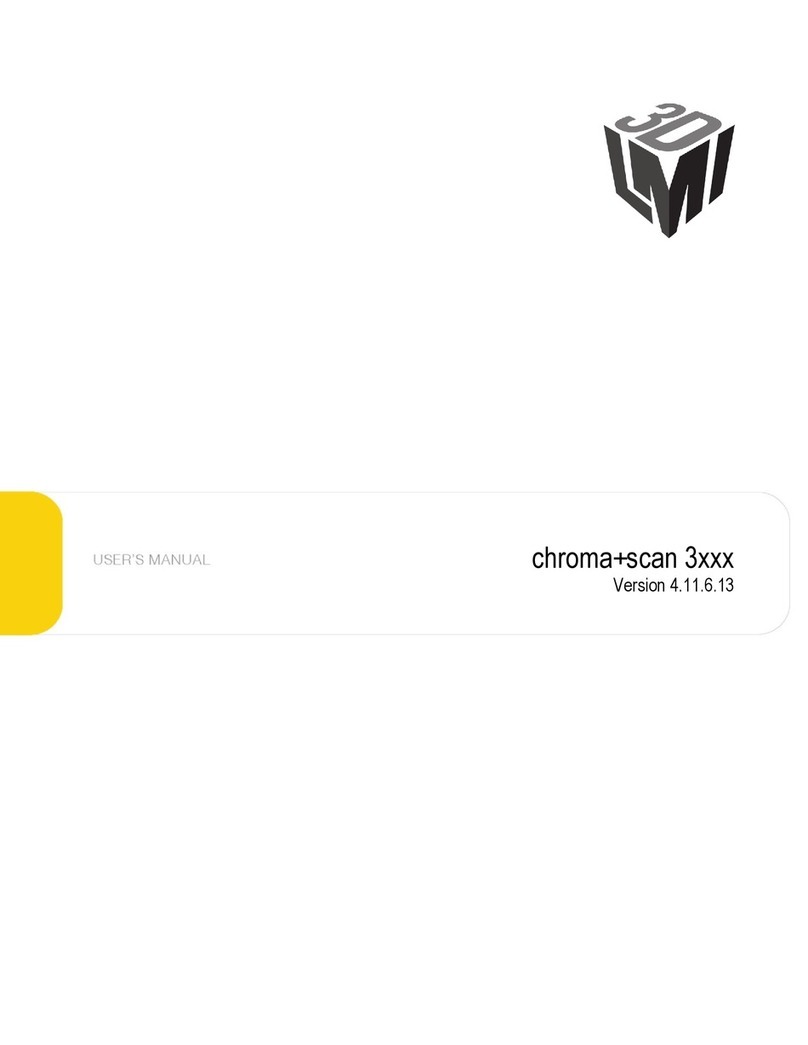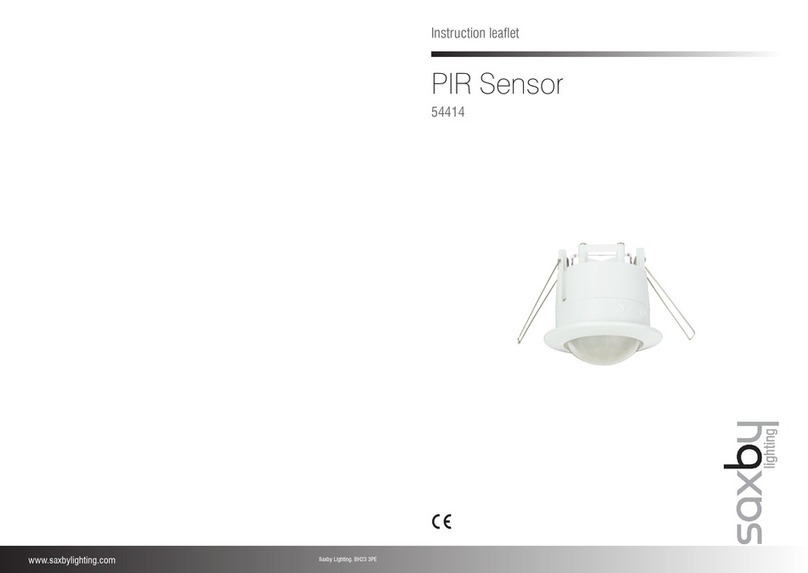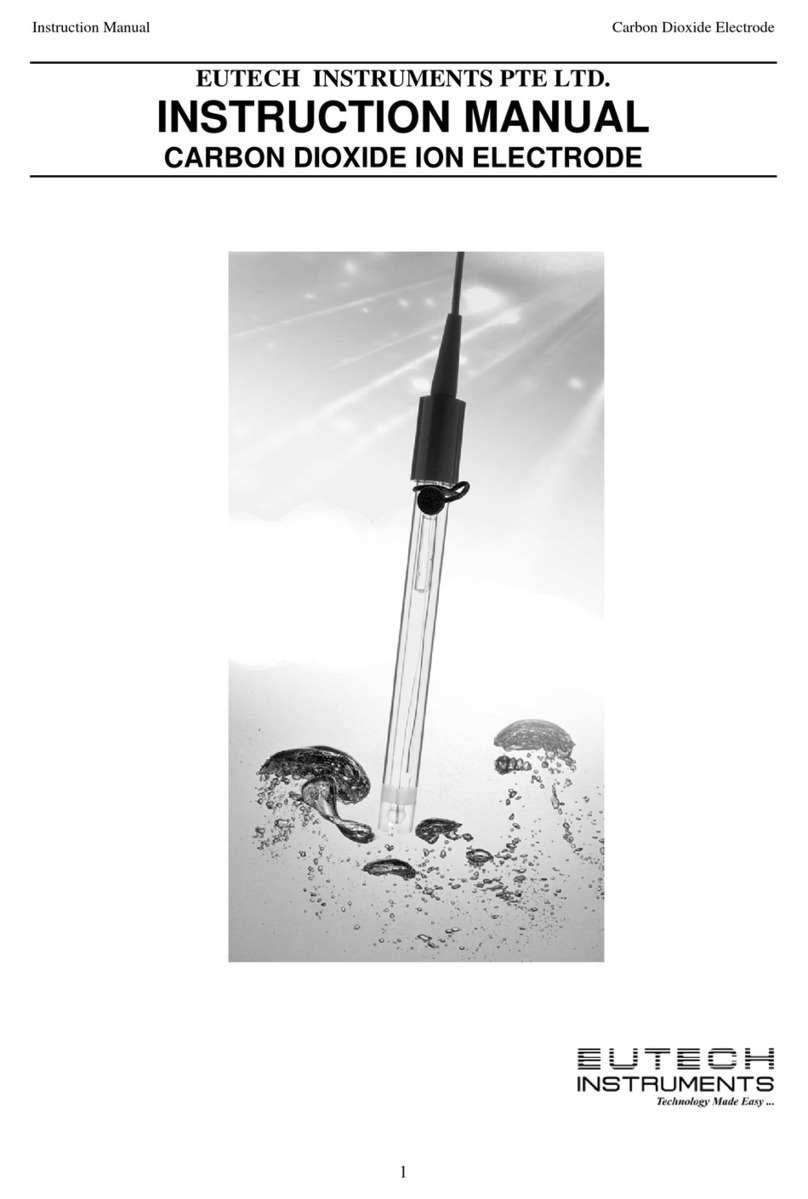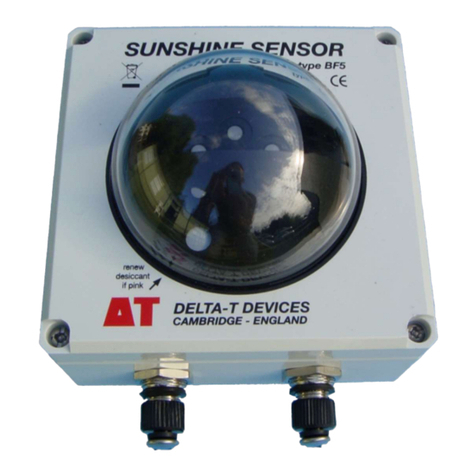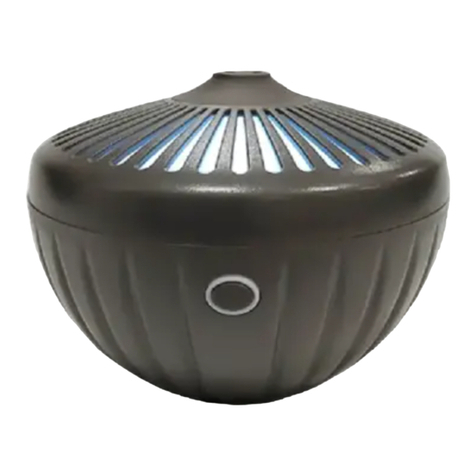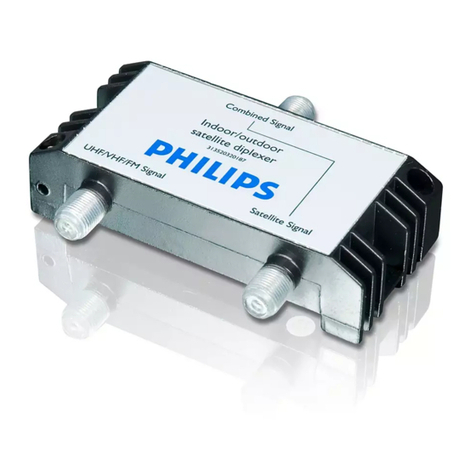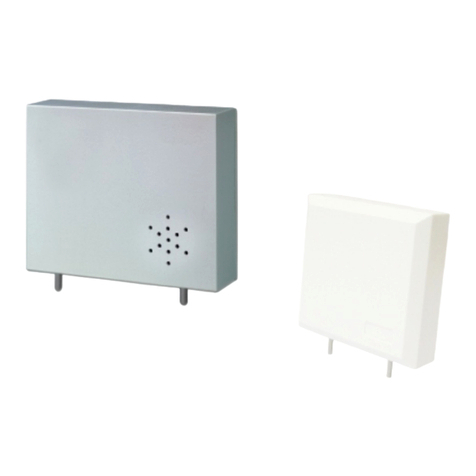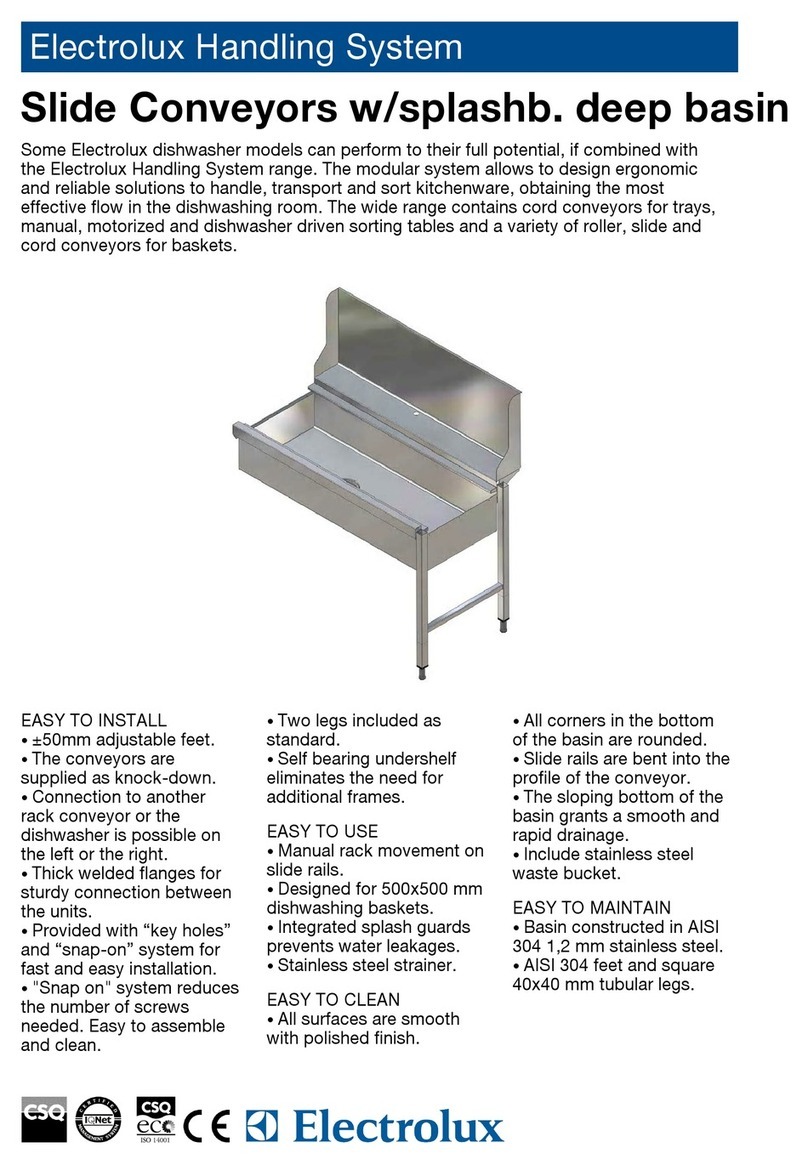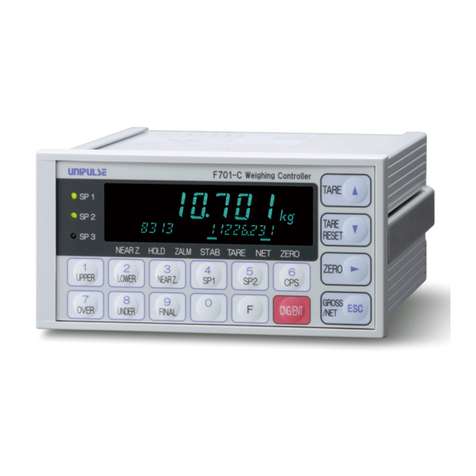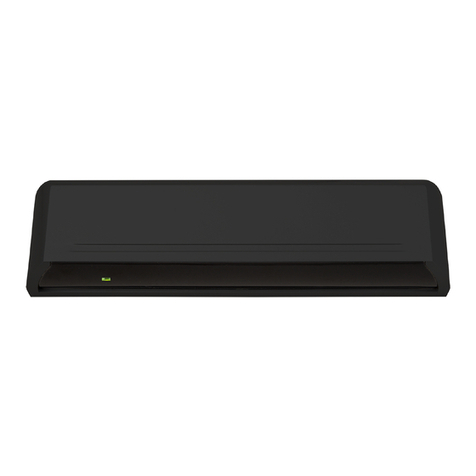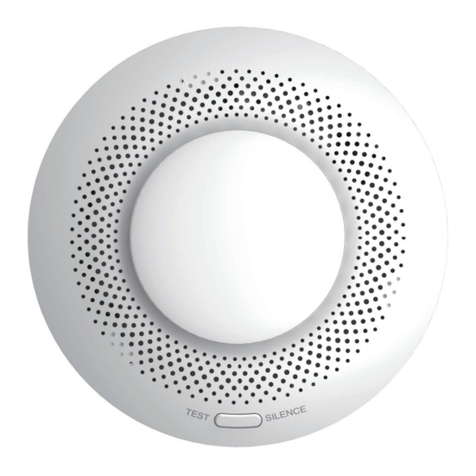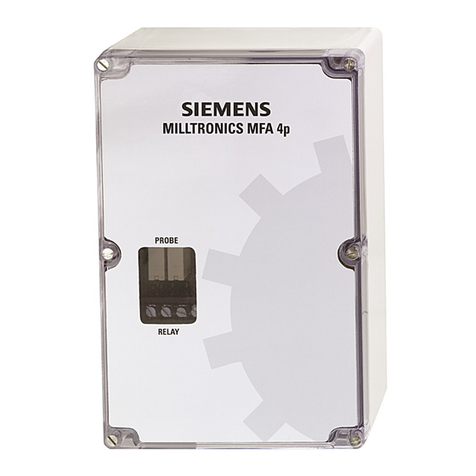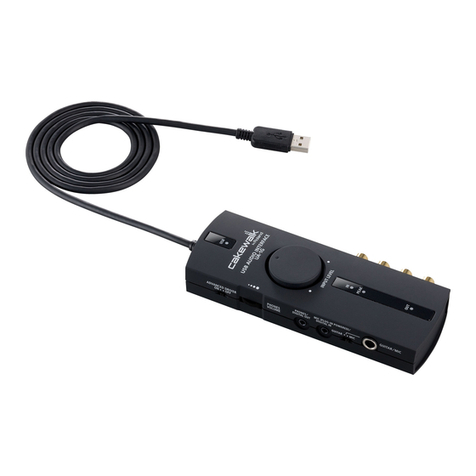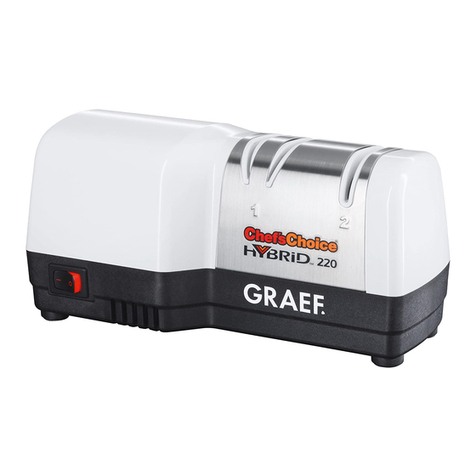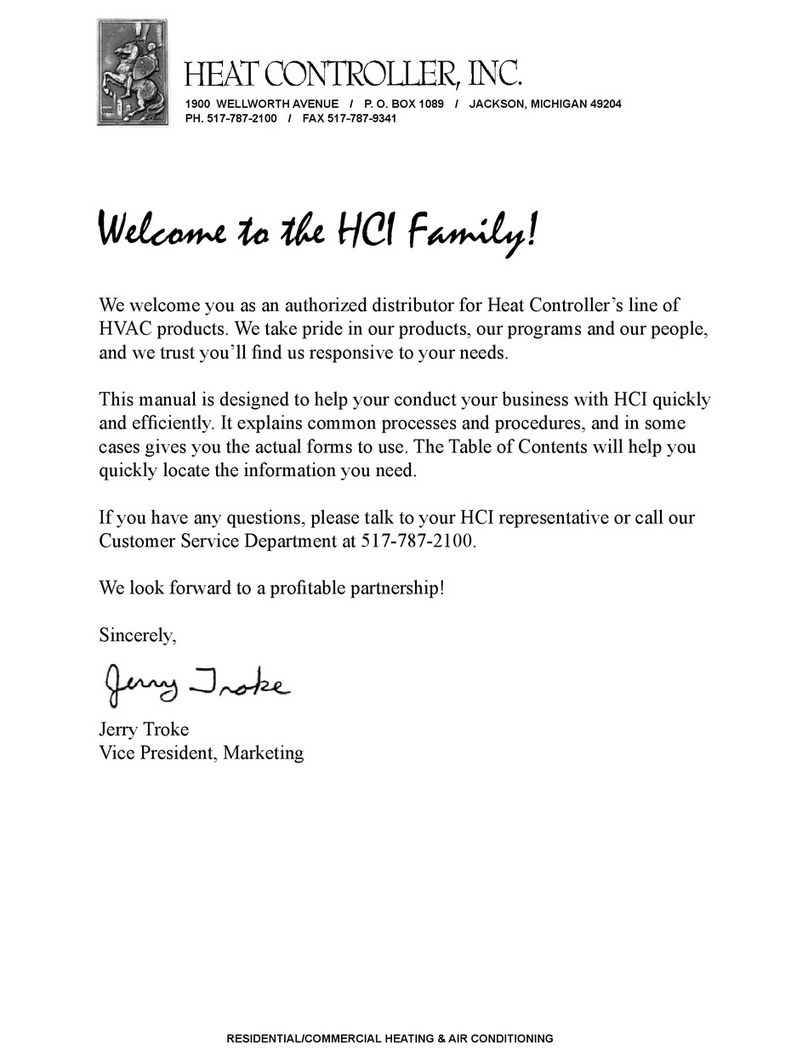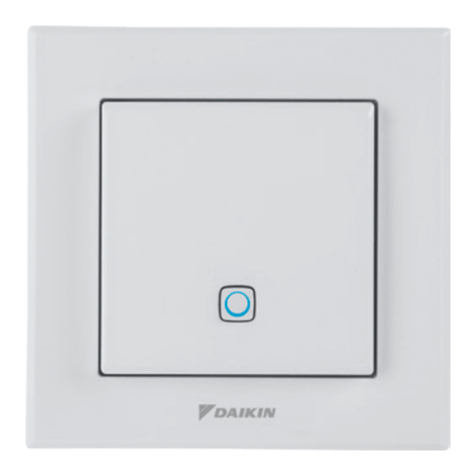Flomec QS200 User manual

-1-
FLOMEC®QS200
INSTALLATION GUIDE
The FLOMEC QS200 provides a robust ultrasonic
owmeter for irrigation applications. The QS200 uses
Percentage of Reading (RD) Accuracy which is superior to
an impeller ow sensor/owmeter that uses Percentage
of Full Scale (FS) Accuracy (download the FLOWMETER
ACCURACY WHITE PAPER for more information on RD and
FS information @ http://bit.ly/omec-accuracy-wp). Also,
the QS200 does not have any moving wetted parts, so
there is no need to replace damaged parts.
This meter uses a two-wire system that is connected to an
irrigation controller’s ow sensor input (or decoder’s ow
sensor port) and meets the cable distance recommended
by Irrigation controller/decoder manufacturers. The
two-wire system communicates via a square wave pulse
that is converted to ow rate at the controller (identical
to an impeller ow sensor communicating to irrigation
controller/decoder). The QS200’s power is supplied
through these same two wires by the controller’s/
decoder’s ow sensor input/port
(voltage range of 7.5 VDC to 36 VDC).
The following lengths of straight pipe should be connected to the QS200 FLOMEC Tee (or NON-FLOMEC Tee):
-10 times the pipe’s inner diameter upstream of the meter
-5 times the pipe’s inner diameter downstream of the meter
The pipe needs to be full of irrigation water with no air inside. Built-up sediment on the QS200’s transducers or large
debris can greatly hinder the meter’s performance. Keep the following in mind when installing:
-Install QS200 at an angle as shown in Figure 1a.
-1 inch pipe installations will need a larger angle
of 45 degrees.
-Flow direction arrows on the QS200 insert must
match ow direction of water through the pipe
(see Figure 1a).
-FLOMEC Tee is bidirectional for ow (the QS200
insert IS NOT bidirectional - the ow direction
matters).
-Flow direction of the QS200 should be horizontal
or upward. DO NOT install owmeter in a
downward ow direction, to avoid partially lled
pipes (see Figure 1b).
-When installing below ground, install meter in a
valve box with a thick layer of gravel below the
meter.
-DO NOT direct bury QS200 owmeter.
-If using a Non-FLOMEC Tee, verify the QS200
insert physically ts into the Non-FLOMEC Tee.
-DO NOT pull on the QS200 wires under any
circumstances.
-Conrm that the Controller/Decoder ow sensor
input (or port) will supply the QS200 two-wire
meter with the appropriate power
(7.5 VDC to 36 VDC).
08/20 IND-1126 Rev A QS200 Installation Guide
GENERAL INSTALLATION PROCEDURE
IMPORTANT:
Read the General Safety Instructions for this owmeter (see last page) before beginning any installation procedures.

-2-
Figure 1a Figure 1b
Figure 2
Figure 3
Figure 4
FLOW DIRECTION
10Xs
5Xs
DOWNSTREAM UPSTREAM
INSTALL AT
ANGLE, IF
POSSIBLE
PAGE 8
INSERT
TOP VIEW
FLOW DIRECTION
ARROW
GENERAL INSTALLATION PROCEDURE (continued)
TEE INSTALLATION (FLOMEC TEE ONLY)
NOTE: It is recommended to install Tee at an angle. The water lines are not supposed to have air in them, however,
sometimes very minute pockets of air can get trapped in the QS200. Installing at an angle helps reduce the consequences
of this issue. IMPORTANT: The 1 inch line size FLOMEC®Tee should be installed at a 45 degree angle.
1. Remove all burrs from inner and outer diameter
of PVC pipe that will be connected to the FLOMEC
Tee. Also, remove inner diameter burrs from
FLOMEC Tee (See Figure 2).
-NOTE: Installation drawings show the QS200 insert
in the Tee, but it is recommended to install the Tee
rst without the QS200 insert inside. This will keep
excess PVC cement off of the QS200 insert.
2. Clean and apply Primer to pipe ends and tee
sockets (See Figure 3).
3. Apply PVC cement to pipe ends and Tee sockets
and quickly assemble the parts while the cement
is uid. Follow the cement manufacturer’s
instructions (See Figure 4).
-NOTE: Only use PVC cement – Do not try other PVC
alternatives.
-NOTE: Make sure Tee is tilted at required angle for
QS200 (1 inch pipe installations will need a larger
45 degree angle tilt).
4. Hold the cemented parts together for a minimum
of 30 seconds.
Below ground installations should be installed with a valve
box with a minimum of 10 inches thick (deep) layer of
gravel directly underneath the QS200. The gravel shall be
through the entire length and width of the valve box. Valve
box extensions may be needed depending on depth.
APPLY PRIMER
APPLY CEMENT
REMOVE BURRS
CORRECT
CORRECT NOT CORRECT
CORRECT

-3-
INSTALLING QS200 METER INTO AN EXISTING TEE INSTALLATION
Remove old insert from tee (Retrot instructions only –
Verify tee is compatible before installation)
1. Turn off water, and alleviate pressure in the
system.
2. Clean all dirt and debris away from the
immediate area and the top of the old insert, then
pull out the quick release pin from the meter (see
Figure 5).
3. Remove the old insert. Grasp the insert ange
with your hand and pull straight up and out of the
Tee, making sure no dirt or other particles fall
into the insert bore of the meter (see Figure 6).
NOTE: The FLOMEC®Multi-Tool (p/n 146055-501) can be
used to make removal of old insert easier (see Figure 10).
NOTE: When replacing another manufacturer’s insert
with the QS200 Retrot Insert, the old insert could have a
sediment or mineral buildup and may need to be leveraged
out of the tee.
Figure 5 Figure 6
PAGE 9 & 17
PAGE 16 & 17
Install new or replacement insert into tee (Both for new
installation and retrots)
1. The Tee insert bore must be clean before
installing the insert and the (2) black O-rings on
the insert should be fully lubricated.
a. The O-rings on the outside of the QS200
Retrot Insert are square prole O-rings. When
installing in another brand of Tee, if the insert
ts too tight into the Tee, replace the square
prole O-rings with the round prole O-rings
included with the QS200 Retrot Insert. Their
installation could make installation easier in
tight tting Tees. The O-rings must be fully
lubricated before insert installation.
2. Orient the insert over the insert bore so the arrow
on the insert is pointing in the direction of ow.
3. Insert the QS200 straight down into the Tee.
4. Push down on the insert ange and twist slightly
to install. Then align the retaining pin holes in the
insert with the holes in the Tee (see Figure 7).
NOTE: The FLOMEC Multi-Tool (p/n 146055-501) can be
used to make installing new insert easier (see Figure 11).
5. Replace the quick release pin (see Figure 8).
6. Using the splicing and wiring information (see
QS200 Wiring Installation section), connect the
wiring from the new insert to the wiring cable of
the controller.

-4-
Using the FLOMEC® Multi-Tool
The multi-tool (see Figure 9) was designed exclusively
for tee type meters that use an insertion type insert. It
facilitates easier removal of the insert, whether from a
QS200 meter or other brands of tee type insertion meters.
It is especially useful when attempting to remove an old,
inoperative, or inaccurate insert from another brand of tee
type insertion meter for replacement with a QS200 insert.
The multi-tool is versatile, compact, and ts easily into the
valve box for close quarters use.
The pointed end is designed for use as:
1. A versatile pry bar and driving wedge. On other
brands of tee type insertion meters, when the
insert lip may be too close to the top of the tee
to use the U-formed end of the multi-tool, use
the pointed end (as pry bar or driving wedge)
between the insert lip and top of the tee to break
the insert loose and gain room between the
insert lip and tee to use the U-formed end to lever
the insert up and out.
2. An alignment tool to align the pin holes of the
new insert with the pin holes in the tee.
3. A cleaning tool for clearing debris from the valve
box lid groove or other crevices.
The U-formed end is designed for use as:
4. A handle for leverage when using the pointed
end.
5. A levering tool by slipping the U-formed end
around the insert between the insert lip and the
top of the tee. This positions the tool for use as a
lever for levering inserts up and out of the tee for
replacement. It can be levered up or down, and
can be rotated to any quadrant around the insert
in order to give the best position for leverage.
The multi-tool (P/N 146055-501) is available for purchase
separately.
INSTALLING QS200 METER INTO AN EXISTING TEE INSTALLATION (continued)
Figure 7 Figure 8
Figure 9
PAGE 9 & 17
PAGE 16 & 17

-5-
INSTALLING QS200 METER INTO AN EXISTING TEE INSTALLATION (continued)
Figure 11
Install New QS200 Insert FLOMEC Multi-Tool
PIN HOLE ALIGNMENT
- For easy pin install
CLEAN LID GROOVE -
Remove dirt, roots, debris
Figure 10
Remove Old Insert From Tee with FLOMEC Multi-Tool
PRY UP - To break a stuck insert loose
LEVERAGE - To Lift
insert up and out
DRIVING WEDGE - To lift insert more

-6-
QS200 WIRING INSTALLATION (Tee and Meter should be installed before splice connections)
Make sure wiring is only done on low DC voltage (7.5 VDC to 36 VDC). Make sure to follow all of the Controller/Decoder
manufacturer’s directions for electrical safety. Also, refer to the General Safety Instruction section provided in this
document. NOTE: Please read this entire section before any physical wiring installation is started.
During this procedure DO NOT pull on the QS200 wires
under any circumstances.
1. Locate wires on QS200. Red wire (+) and Black
wire (-) are the only two wires on QS200.
2. 1 Pair - #18 AWG wire cable (Direct Burial)
cable is recommended. Controller manufacturer
may recommend thicker gauge wire for longer
distance (which is ne since the recommended
splice kit accepts thicker gauge wire sizes).
3. Document the specic cable wire colors that are
being spliced to the QS200 Red (+) and Black (-)
wires. This will help when connecting the other
end of the cable to the controller (as described in
Step 7 of this section).
4. 3M DBR/Y-6 splice kit (or equivalent) is
recommended to splice connect the QS200
to the cable. Follow instructions (See Below
3M DBR/Y-6 Splice Instructions for QS200) on
splice kit to ensure a good, solid, and waterproof
connection is obtained.
5. Ensure that a service loop is provided at the ow
meter in case future maintenance is needed.
6. Make sure not to puncture or splice the cable
that goes from the meter to the controller/
decoder (to prevent ground interference). Make
sure cable length is within controller/decoder
manufacturer’s recommendation.
7. Connect the (+) and (-) ends (as described in
Step 3 of this section) of the direct burial cable
to the controller’s/decoder’s ow sensor input
(or port) per controller/decoder manufacturer’s
direction. Keep in mind that the ow sensor input
(typical designation for irrigation controller’s
ow meter/ow sensor input) or the port (typical
designation for decoder’s ow meter/ow sensor
input) must be an input that can accept a ow
sensor and provides power to the QS200
(7.5 VDC to 36 VDC).
3M DBR/Y-6 Splice Instructions for QS200
NOTE: Wiring diagram is shown in Figure 13.
1. When using cable, cut off the unused wires so
that they are even with the sheath of the cable.
NOTE: Remember the color of the twisted pair of wires you
use so that you can make an identical connection with the
same wires later.
2. 3M DBR/Y-6 Splice Kit Instructions:
a. Strip insulation ¾ in. (19 mm
(see Fig. 12a).
b. With wire ends even, insert wires
into the connector and tighten
until secure (see Fig. 12b).
c. Insert the connector all the way into the tube
until the connector rests on the bottom of the
tube (see Fig. 12c).
NOTE: If having difculty getting the twist-on connector
down into the tube when using small gauge wires, use a
thin, non-conductive object to push the connector to the
bottom of the tube. Upon removal of the object, ensure that
no voids or water paths remain in the grease.
d. Fold the wires into the channels.
e. Close the cap (see Fig. 12d).
Figure 12a
Figure 12b Figure 12c Figure 12d

-7-
Calibration
Set K-factor and Offset per QS200 FLOW INSERT SELECTION CHART below (reference QS200 Data Sheet - FLOW INSERT
SELECTION CHART - Download DATA SHEET HERE. These calibrations will be congured in the irrigation controller.
NOTE: Most irrigation controllers will refer to devices as “ow sensor” instead of owmeter.
1. Make sure line is full of water with no trapped air.
2. Flow meter may take a few minutes to start
averaging out ow per irrigation controller
displays.
3. It is recommended to monitor and observe
stabilized ow rates before setting control limits.
Operation
QS200 WIRING INSTALLATION (continued)
RED
BLACK
DBR/Y-6
SPLICE KIT
FLOW INSERT
TO FLOW " + "
ON FLOW SMART
MODULE
TO FLOW " - "
ON FLOW SMART
MODULE
18 AWG CABLE
to CONTROLLER
Figure 13

-8-
© 2020 Great Plains Industries, Inc. All Rights Reserved.
Great Plains Industries, Inc. Australia
+61 2 9540 4433
FLOMECmeters.com
1. DOWNLOAD QS200 Owners Manual
The QS200 Owner’s Manual provides additional
information:
-General Safety Instructions
-Specications
-Assembly Drawing
-Operation/Trouble Shooting
-In-Depth Tee Retrot Information
-Parts & Service
-Warranty (see last page)
2. DOWNLOAD QS200 Data Sheet
3. DOWNLOAD QS200 Installation Detail (.pdf)
4. DOWNLOAD QS200 Installation Detail (.dwg)
INFORMATION RESOURCES
GENERAL SAFETY INSTRUCTIONS
IMPORTANT: It is your responsibility to:
Ensure that all equipment operators have access to adequate instructions concerning safe operating and
maintenance procedures.
Compatibility of this product’s material and the process
fluid and/or environment should be considered prior to
putting into service.
Product should never be operated outside its published
specifications for temperature or pressure. See
specifications for your model.
When applying power, adhere to specifications listed in
appropriate electronics manual.
Make sure flow and pressure have been eliminated from
process pipe prior to installing or removing product.
This product is not approved for use with petroleum
products (diesel fuel, unleaded gasoline, jet fuel,
kerosene, etc.), aromatic hydrocarbons or other
incompatible chemicals
This product is not approved for use in hazardous
locations.
Disconnect external power before attaching or
detaching input or output wires.
Installation near high electromagnetic fields and high
current fields is not recommended and may result in
inaccurate readings.
Do not allow water to freeze in meter. Ice expansion may
burst the plastic housing.
Do not allow this meter to be used with steam.
NOTE: Be sure O-rings and seals are kept in good repair.
08/20 IND-1126 Rev A QS200 Installation Guide
Other manuals for QS200
5
Table of contents
